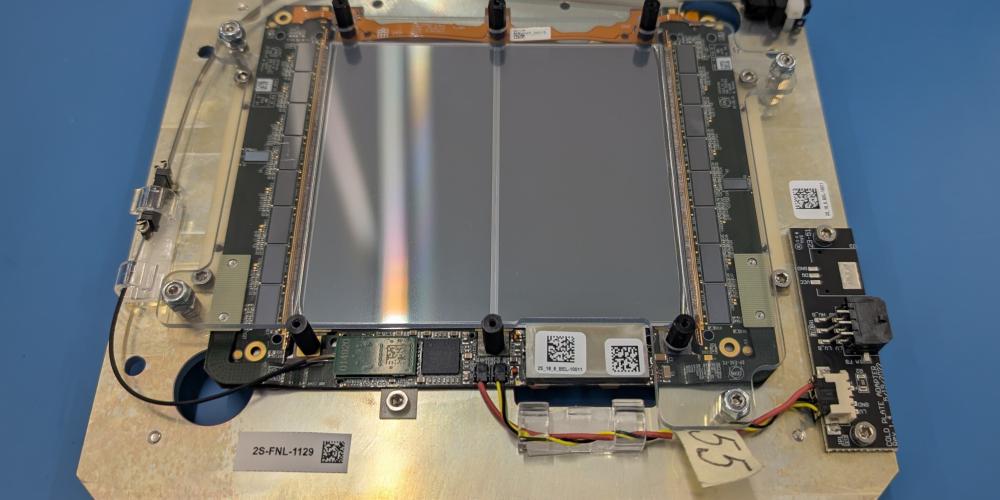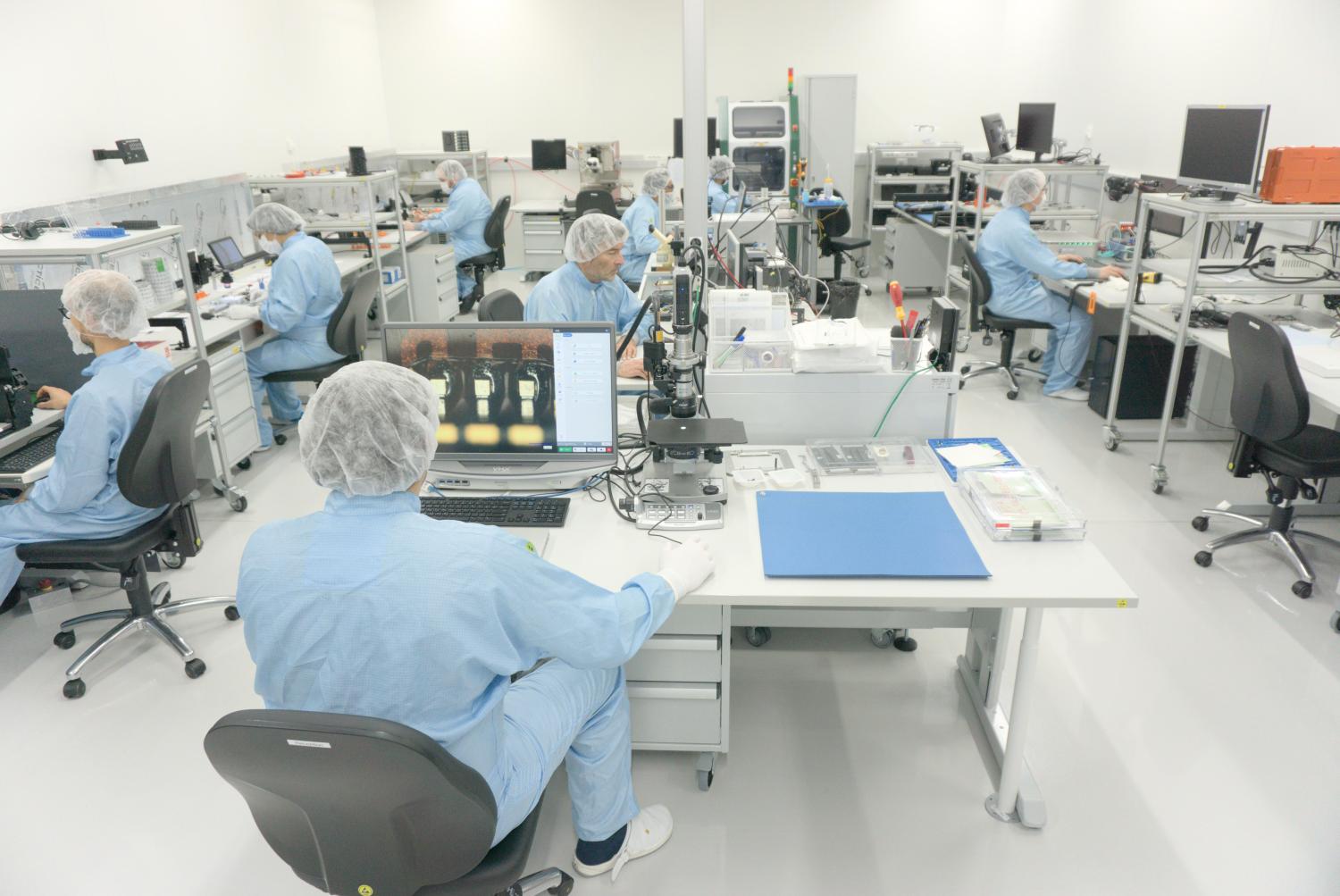

The IIHE cleanroom at VUB (Foto Tytgat/VUB)
One of the most advanced components of CERN’s next-generation particle detector is being constructed at the Vrije Universiteit Brussel (VUB). In a cleanroom on its Etterbeek campus, the production has recently commenced on 1,600 modules that will eventually form the core of the new detector within the CMS experiment. The CMS, or Compact Muon Solenoid Detector, is a flagship project of the European research centre in Geneva. Professor Michael Tytgat of the VUB, director of the Interuniversity Institute for High Energies (a collaboration between VUB and ULB), is one of the key figures involved.
The construction of the modules is taking place at the Interuniversity Institute for High Energies (IIHE), a joint initiative of physicists from VUB and ULB. These new modules form part of the so-called “tracker” in the experiment: a central component of the CMS detector which meticulously records the trajectories of thousands of particles produced during collisions in CERN’s particle accelerator, the LHC. There are 40 million collisions per second. The experiment aims to push the boundaries of our scientific understanding.
The current tracker detector is due for replacement. In 2026, the accelerator will shut down for four years, allowing for a comprehensive upgrade that will significantly enhance its capabilities. The new tracker—and the modules being built in Brussels—will enable the CMS experiment to cope with the expected explosion of data from 2030 onwards. “We are not merely building technology here,” says Professor Michael Tytgat (VUB), director of the IIHE. “We are contributing to an instrument that helps us seek answers to the most profound questions about the universe. The fact that this is happening in Brussels—alongside only a few other leading institutes worldwide—with the involvement of students, researchers, and technicians from five Belgian universities, is quite remarkable.”
The VUB is collaborating on the project with four other Belgian universities: ULB, UCLouvain, UGent, and UAntwerpen. Over the next two years, researchers, engineers, and technicians from across Belgium will work together at the IIHE on this intricate construction project. The overall initiative is supported by EWI, the FWO, and the FNRS, which together are investing more than €12 million in this exceptional scientific collaboration.
Belgium’s involvement in such a major international project is no coincidence. The country has played a prominent role in the CMS experiment for decades. Belgium, including the VUB, has been involved since the project's inception in the 1990s and has made vital contributions to the construction of the current detector. Belgian scientists were also part of the team that discovered the Brout-Englert-Higgs boson in 2012—a discovery that led to a Nobel Prize for Belgian physicist François Englert. Today, the Belgian CMS group still comprises around one hundred scientists.
The production of the new CMS tracker modules is underway at the IIHE. Over the past few years, a dedicated cleanroom was specially equipped for this task. The first modules are now complete. “Our cleanroom at the IIHE, here at the VUB, currently plays a crucial role in a global scientific experiment,” says Tytgat. “We are proving that fundamental research need not be a distant concept. What we are building here is, quite literally, part of a global quest for new physics.”
Since the discovery of the Brout-Englert-Higgs boson, the CMS experiment has continued to yield new data that challenges the Standard Model of particle physics. Just this March, an anomalous phenomenon was observed: an unexpected overproduction of top quark pairs—fleeting “molecules” of two heavy quarks which, according to theory, should not exist. These findings highlight the enduring importance of investment in fundamental research.
Further Information
Prof. Michael Tytgat (VUB), Director of IIHE